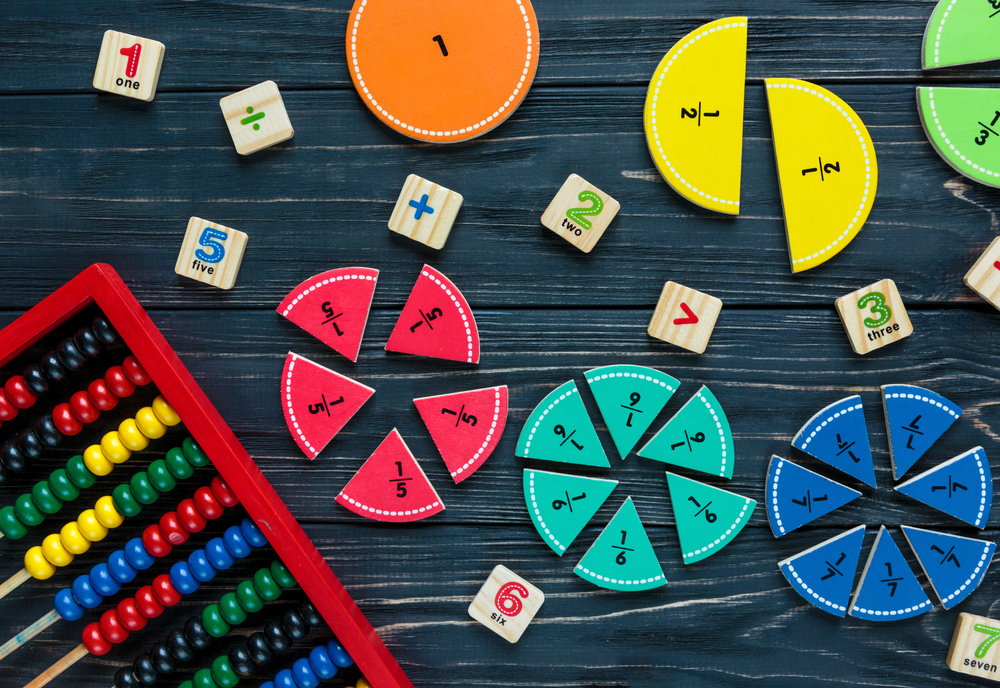Best Grading and Effective Assessment Practices in Education
March 10, 2020
As parents and educators, we all remember receiving our graded work back from the teacher, usually with a letter circled at the top. Most of us were happy and proud to see an “A+”, with our parents displaying our success on the refrigerator door. While other times, we were disappointed, and sometimes even sad, to find on the top of the page a big, red “F”.
For generations, students in America have been accustomed to receiving letter grades for their schoolwork. Each letter represents a percentage range that spans 10 points, with an “A” being the highest grade, and an “F” translating into a failing score. Most kids and parents have come to accept that letter grades measure a student’s success in a particular subject. But have you ever stopped to think about whether those grades truly tell you everything you need to know about your child’s skill level and mastery?
The simple truth is that letter grades do not tell the whole story about a child’s success or struggles. In fact, a relatively new initiative to replace traditional grading scales with something new and more effective is already sweeping through our nation’s schools.
Let’s take a deeper look into today’s best practices in grading and assessment to find out more about the standards-based grading systems that are gaining traction in our schools across the country.
Grading Practices and Assessment in Education: What’s Happening to Traditional Letter Grades?
Imagine the following scenario: your 2nd grader ends the grading term with a 78% in math. What does that 78 tell you about his skill mastery? Can he add proficiently, or does he struggle with subtraction with regrouping? It’s hard to tell because it only gives parents and kids one way to measure progress. That 78 hides the details of a child’s skills or deficits.
Obviously, grades don’t reveal a whole lot about a child’s true progress or success in any one skill, but merely offers a ballpark estimate of overall subject mastery, which leaves much to question. Instead, many educational experts have started to support another way to assess students’ skills, leaving traditional letter grades in the past. Parents and teachers everywhere: meet standards-based grading (SBG).
Best Grading Practices: What is Standards-Based Grading?
SBG is a system that seeks to measure student progress over multiple skills within a subject area, and to communicate meaningful feedback that tells parents and learners where they are proficient, and what skills still need to be mastered. Unlike letter grades, SBG uses language that explains specific learning targets, which are developed based upon Common Core or state-mandated standards.
Under a SBG system, each individual assignment or assessment will have a detailed rubric that thoroughly explains each level of proficiency. Many schools use a 1-4 scale that include explanations of how to attain each score point, while others utilize descriptors such as the words, “developing, “progressing”, “proficient”, and “advanced”. By using a numerical or descriptor-based scale, it takes the stigma out of letter grades that have strong positive or negative associations, while providing specific feedback about the level of mastery regarding the standard or skill being assessed.
How Can SBG Support Effective Learning?
SBG systems benefit students, parents, and educators in a myriad of ways. Let’s take a look at how for each of these groups.
For parents:
- Parents can receive actionable feedback regarding mastered skills or areas to improve.
As mentioned briefly above, a letter grade hides specific details about student progress in a particular skill or standard. However, if a child is graded “progressing” rather than “proficient”, parents know immediately that their child has made some progress but has not achieved grade level performance on the skill that was assessed. Further, they can look to the rubric that explains, in detail, the description of work that is labeled as progressing. They can then compare it with the proficient category to see what practice still needs to be done to master the standard.
- The rubric will show what, if any, portion of the assignment was effort or completion based.
This will inform parents about their child’s work ethic and whether the assignment was turned in on time but will still contain language pertaining to the actual mastery (or lack thereof) of the skill. This makes it easy to tell that the grade doesn’t just contain behavior-based criteria.
- Parents can focus on helping children increase confidence in any subject area.
Letter grades carry with them a stigma; strong emotions can be attached to high grades like an “A”, or failing grades like an “F”. Students may feel an intense feeling of shame if they receive an “F”, fueled by pressure to get high grades or straight A’s. In turn, kids and their families begin to forget about the skills to focus only on the grades themselves. SBG helps to normalize the fact that learning isn’t all about making straight A’s. Instead of pushing children to make straight A’s, parents can support student learning, one skill at a time.
For students:
.jpg)
- Students receive detailed feedback that can improve their learning and self-esteem.
Similar to the previous bullet point, the biggest benefit of SBG for kids is that it supports a shift of focus as far as grades are concerned. With SBG, students can build confidence and self-esteem, even when struggling in a particular subject area or skill. Because the stigma is removed, kids can focus on learning instead of letter grades.
- Kids know exactly what they’re supposed to learn.
Children have a much greater sense of purpose and motivation when they understand the reason for why they’re doing something, and the steps to how to achieve it. SBG relies on teachers giving students clear learning targets. When children know what success is supposed to look like, they are able to follow the steps to accomplish the task or skill. They can then monitor their own progress and understand their own skill mastery or deficits; this makes them more accountable for their own learning.
- Students are given multiple opportunities to reach proficiency.
The basic understanding of SBG is that students fall somewhere on a continuum of attaining or mastering a skill. As mentioned above, this normalizes the idea that school is about learning and not merely about making high grades. This allows children to receive support and interventions that can help them achieve proficiency in a variety of ways without the finality of letter grades.
For teachers:
.jpg)
- Lesson planning is made easier because teachers of the same course will be more aligned.
Something amazing happens when teachers implement a SBG system: suddenly all colleagues are teaching the same skills! Teachers are required to align their lessons to state standards regardless of the grading system being used, but it can be easy to get off track, especially with so much that an educator needs to accomplish, plan, or grade. SBG makes it easier by aligning planning with grading to ensure continuity. Moreover, by focusing grading on the standards, it guarantees that all teachers will be working on the same skills in their classes, encouraging team planning.
- SBG eliminates unfair grading practices and pressure from the top.
Most teachers want to use fair grading practices at all times, but it’s undeniable that sometimes grading with letter grades can be tricky. Unfortunately, it’s all too common that administrators or other stakeholders place pressure on educators to inflate grades or base them on effort instead of skill mastery. It makes sense since no school wants to be looked upon in a negative light due to lower than expected graduation rates. But grade inflation can have deleterious effects on kids who don’t end up learning what they need to be successful in college or beyond. SBG eliminates this problem by focusing only on skill mastery and the steps students need to take to get there.
- It’s easy for educators to identify when students need extra help or more enrichment.
Because teachers under a SBG system assess students solely upon standard-based proficiency, they become more knowledgeable about their students’ strengths and weaknesses over a range of different skills. This allows for easier differentiation in the classroom. Students who face challenges in a particular subject or standard can get extra support to succeed, while students who need more enrichment can get it. Moreover, it could help instructors identify students who may need special services, like special education support, or to identify gifted children.
All told, it should be easy to see how SBG should be considered among the best practices of schools on effective grading and reporting. Rather than focusing merely on the letter grades they receive, students can instead focus on their learning, with adults monitoring and offering support or enrichment along the way. No matter if you’re an educator or parent, the above information can help you to understand the grading trends in the country at the current moment, and how these ideas can help support your budding little learners!


.jpg)

.jpg)







